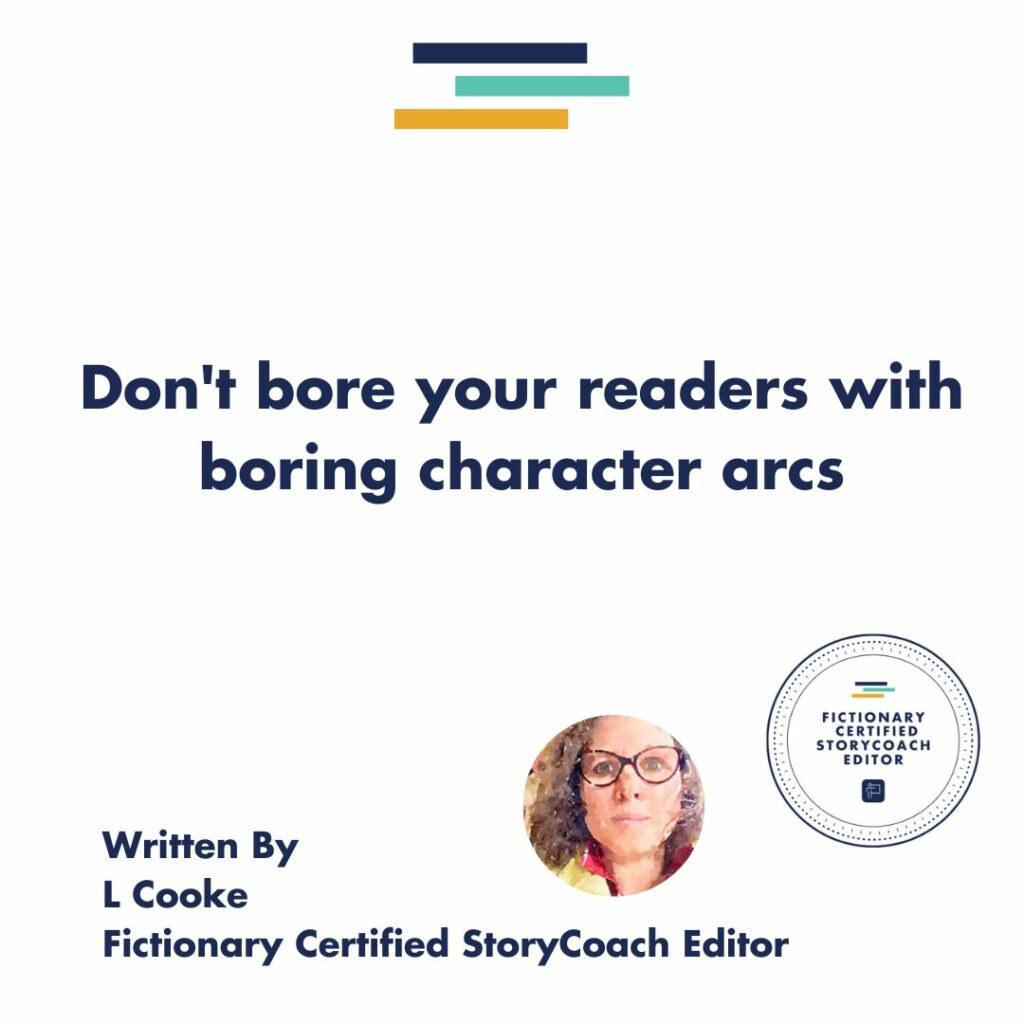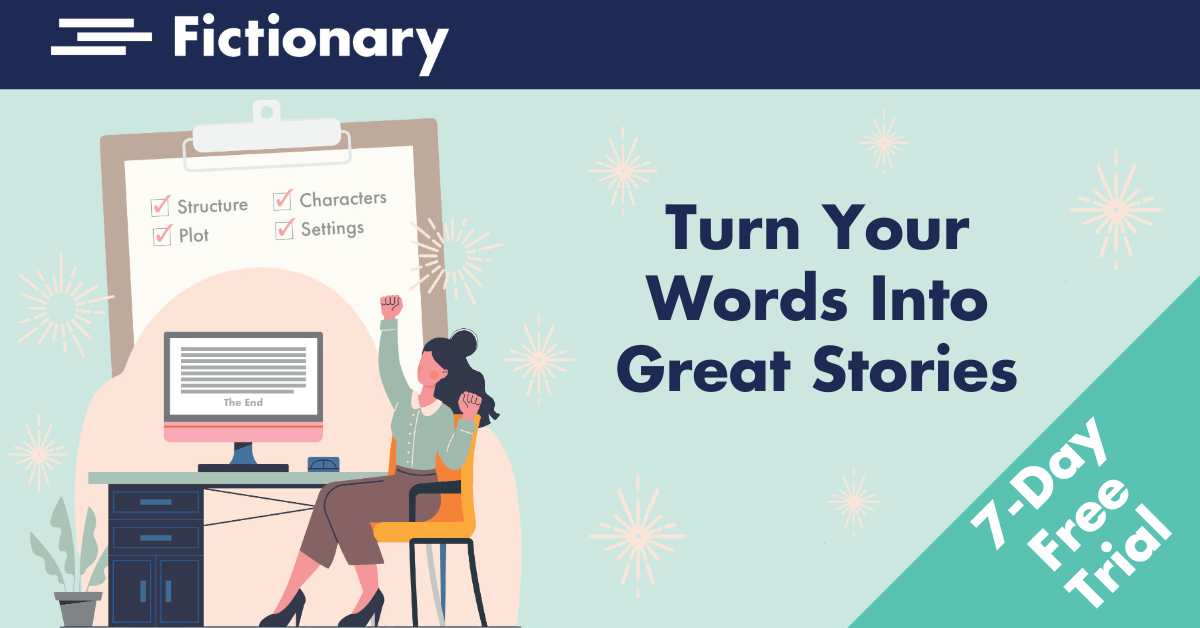Why Edit your Character Arc
Your beta reader’s feedback
Is the feedback from your beta reader that your story did not interest them? Or, if they are a braver type of beta reader, that your story bored them? Did your beta reader not connect with your protagonist? Or they said the story did not keep them involved?
That feedback hurts.
You might want to dismiss the beta reader’s comments. Tell them thanks, but no thanks for the feedback. Your fingers might go in your ears, but a very quiet inner voice is whispering to you: just check. Just prove to yourself that the beta reader is wrong.
How do you check to see if your story is far from dull?
You have spent at least 80k words with your protagonist. As the writer, you are in love with your protagonist, and you are in love with their journey. This love blinds you. Yet, why did the beta reader not fall in love too?
Stories are about change.
If there is no change in a story, then the story is a bore. And you can change a story by editing it using the Fictionary Story Elements. And that is the key to unlocking a story’s boredom padlock. The protagonist must change through the power of your story.
Fictionary Story Elements here to help
If you have the feedback that your story was a bit of a bore, don’t despair. You can still sweep the readers up in your words, have the characters, the plot and the setting working together. The revision will catch all that.
Before you can revise, though, you need to edit your story to find out where the issues are. Fictionary is not all about using big academic concepts. Fictionary is all about actionable advice using Fictionary’s 38 story elements structural as editing tools. Use these and you will self-edit with ease.
And with the feedback that your writing was dull, then the first place to look is your protagonist’s external Character Arc.
If you want your first edit pass to look at de-dullifying your story, then look at the external Character Arc. The Character Arc is built from the protagonist’s relationship to the goal in each scene. The loveliest news is that Fictionary plots your Character Arc for you once you fill in that element for each scene. Great, let’s go searching out your book’s Character Arc.
But first we are going to look at what a Character Arc is.
An external Character Arc:
Kristina Stanley, in her brilliant blog, what is a Character Arc, explains what a Character Arc is. The knowledge that every one of your scenes must impact the protagonist is insightful. It is also the easiest way to see if the scene stays in the story, which means the scene is story-interesting.
The external Character Arc is the change that a protagonist goes through in a scene that leads them closer or further from the Main Story Goal.
If you track your external character arc in every scene, you can have a hard and fast method to prove that the scene will:
create sympathy for the reader,
be interesting,
keep the reader turning pages.
How important is the Character Arc?
There are three choices when you fill in your character arc story element.
- A positive change—the protagonist closer to the story goal.
- A negative change—the protagonist is further from the story goal.
- Neutral—there was no change in the relationship to the story goal in that scene.
Below is this chart in a diagram.
For the super story nerds out there, the protagonist’s relationship to the goal must always be in motion. When there is no change, then the story is standing still. And any scene that you mark off as Neutral, then you can see where the scene is perhaps “dull” when thinking about the story’s main goal.
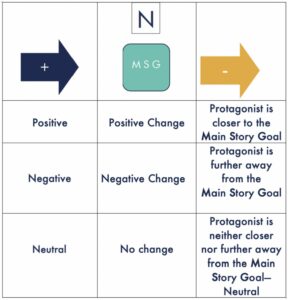
Once you select positive, neutral, or negative from the drop-down menu in Fictionary,the Character Arc get drawn for you. How great is that?
Every time the Protagonist gets closer to their goal, the readers’ hearts lift as the protagonist has learnt how to overcome an obstacle. Every time the Protagonist gets further from their goal, the scene is full of tension, and the reader is glued to the page. The other option is that if the protagonist is no closer or further away from their goal. This is a flat line. Which is dull.
As you can see on the insight below, Fictionary creates this for you when you edit for the Fictionary Story Element Character Arc.
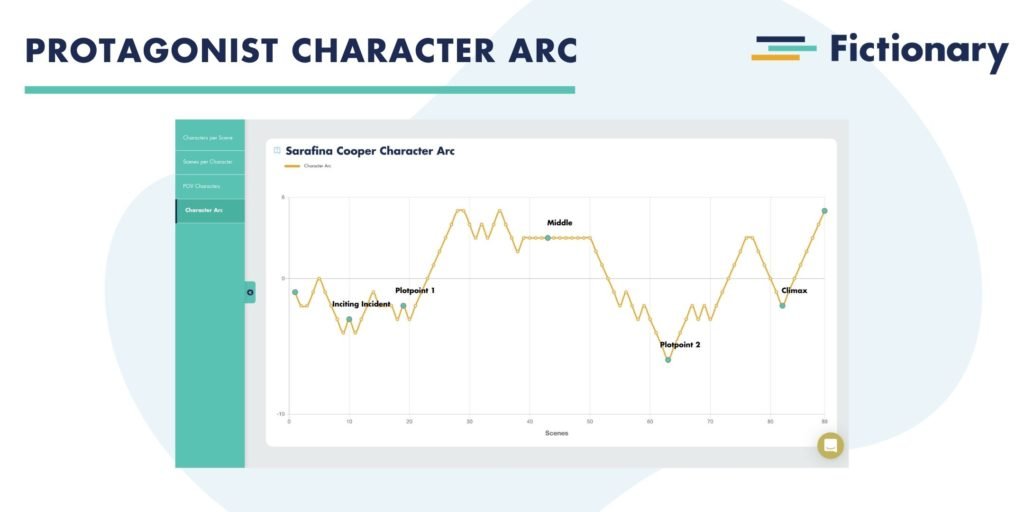
How to read the Character Arc
There are some things to remember. To edit out the boring parts of your story, flat lines are potential revisions, but also perhaps consider too many scenes in one direction might need looking at too.
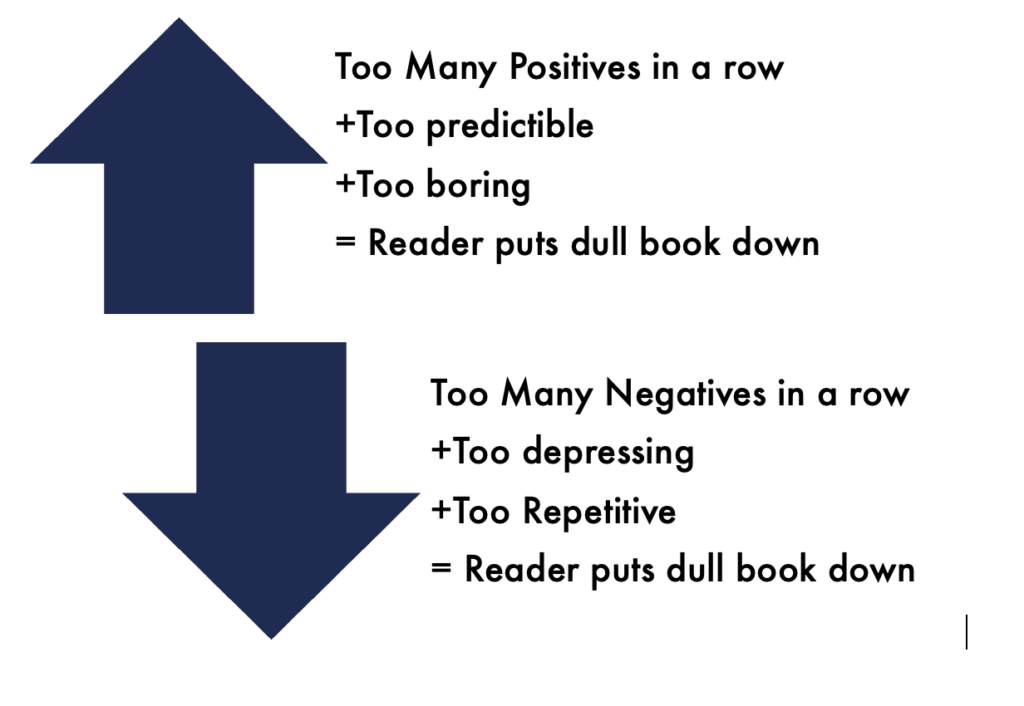
Variety with regards protagonist’s distance from the Main Story Goal is the healthy heartbeat of interest in the story.
Further reading—Character Arc
I love craft books. Come on over to the Fictionary Community to read some books the community recommends in the Craft Book Corner. Writing craft books rock. But there are also loads of other resources in the Community that will help you as you are on your editing journey.
And another resource is these blogs. Kristina Stanley shows you in this blog how if you relate the Character Arc to your protagonist’s internal flaw, then you can add even more depth.
All readers will love your revised story structure
Beta readers have a hard job, letting a writer know how a reader will respond to the draft story. And if they tell you that the story was a bit of a snore, then focus on editing your Character Arc, the Fictionary way. Your story will be strong, your characters will be sympathetic, and your readers will connect with your writing. All by using Fictionary’s Story Element Character Arc to strengthen your story. Easy days.
Post Written by L Cooke
 As a Fictionary certified Editor, I will explore your Work-In-Progress, chapter-by-chapter, scene-by-scene, story-element-by-story-element. You will end up with a treasure map of sorts, full of actionable advice and a greater understanding of your Work-In-Progress.
As a Fictionary certified Editor, I will explore your Work-In-Progress, chapter-by-chapter, scene-by-scene, story-element-by-story-element. You will end up with a treasure map of sorts, full of actionable advice and a greater understanding of your Work-In-Progress.
Contact at: https://invermuse.co.uk/
![]()


